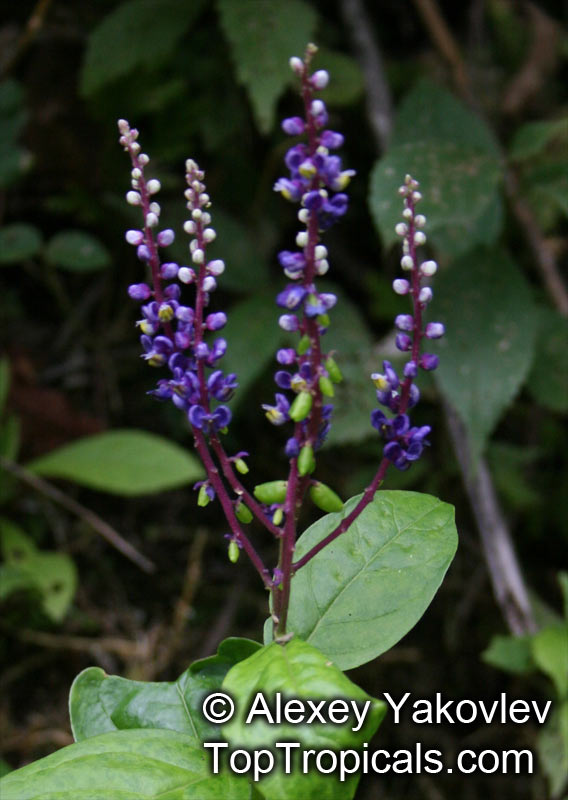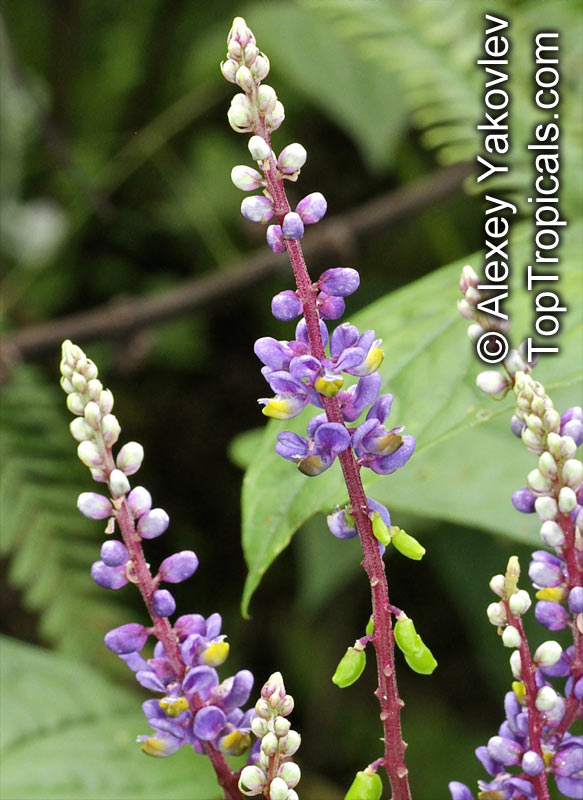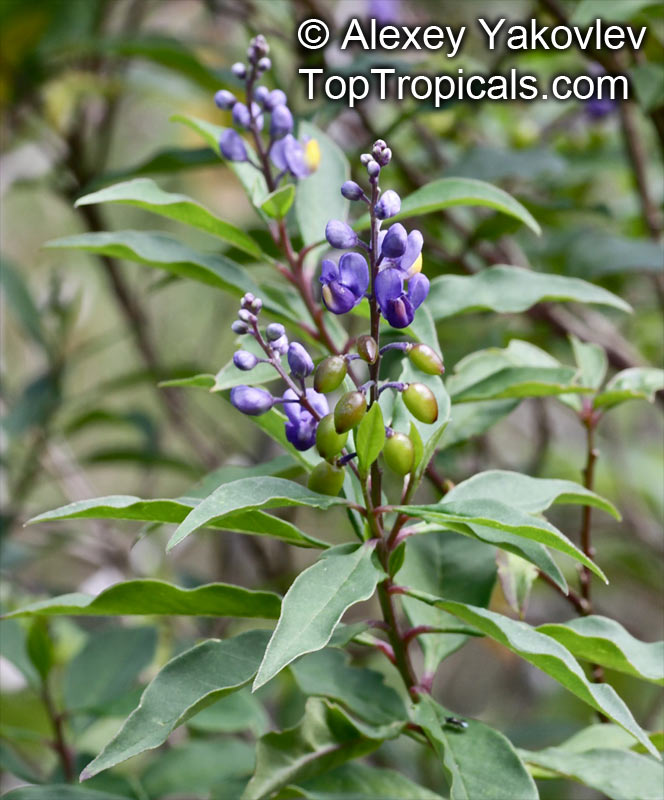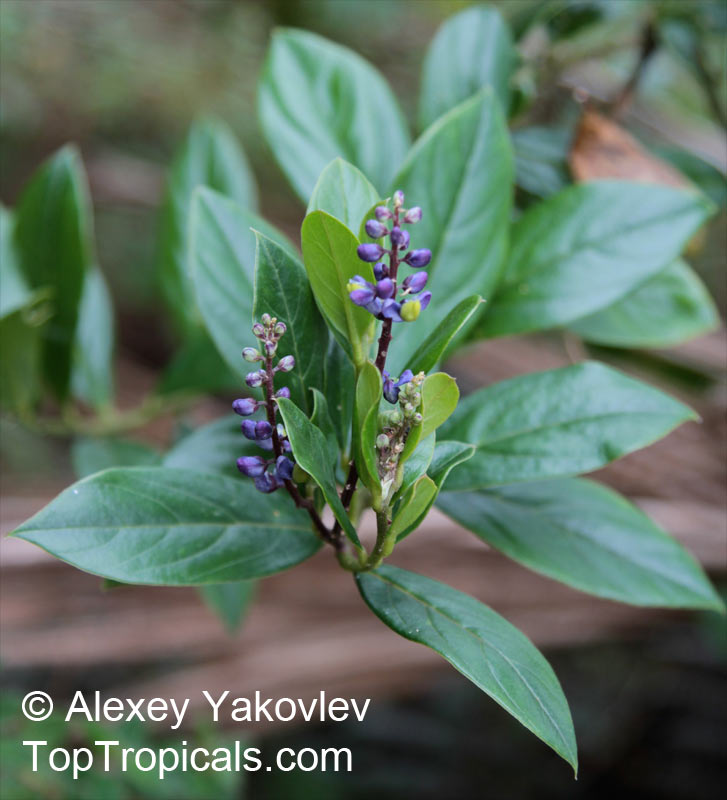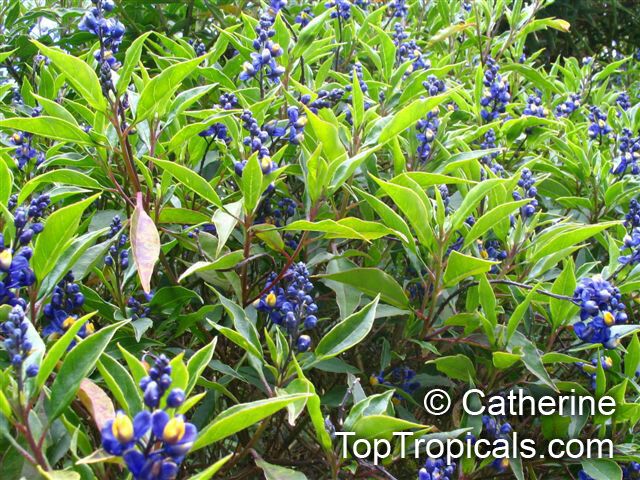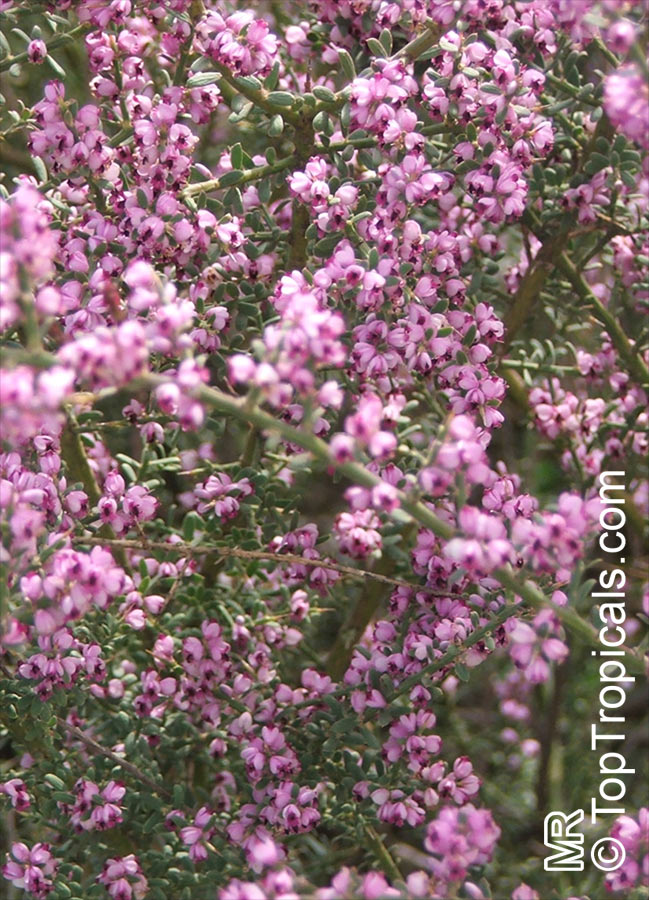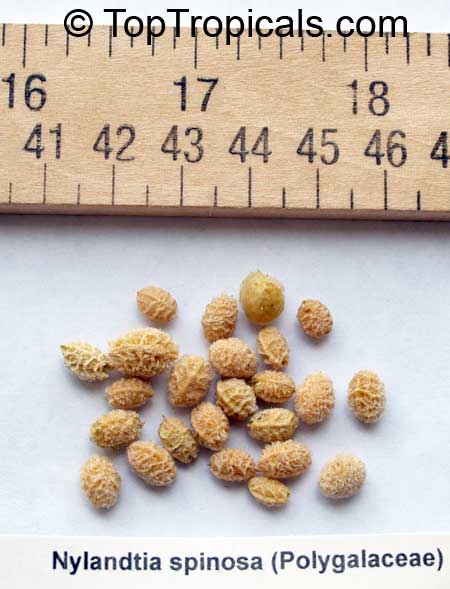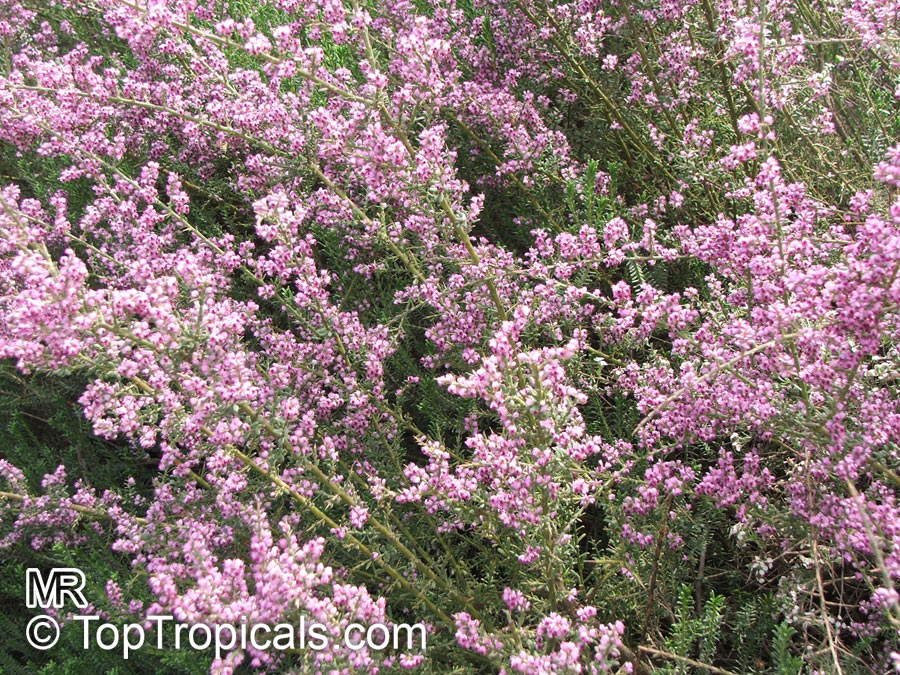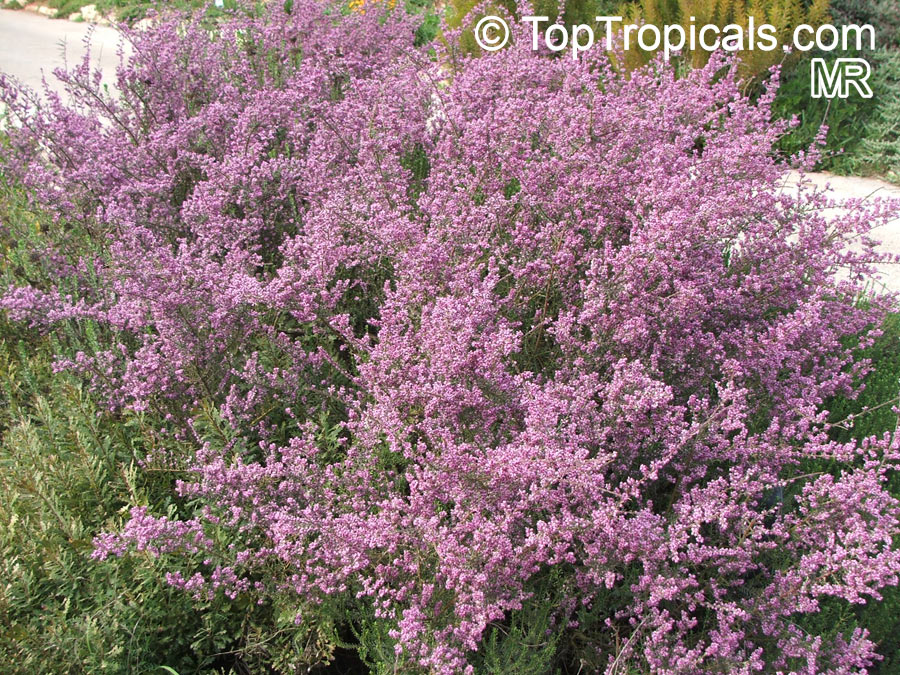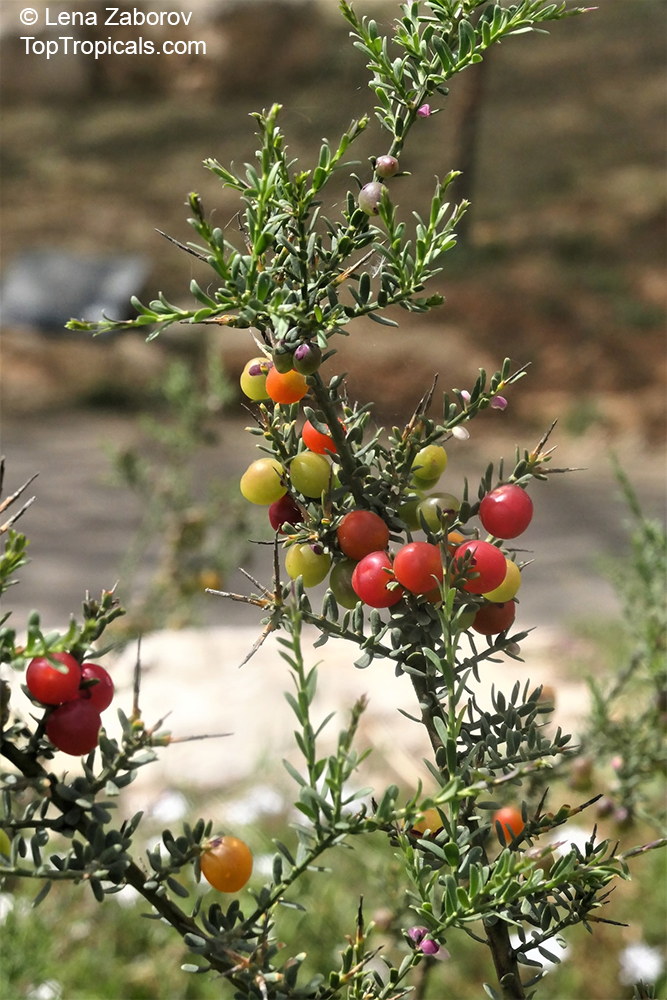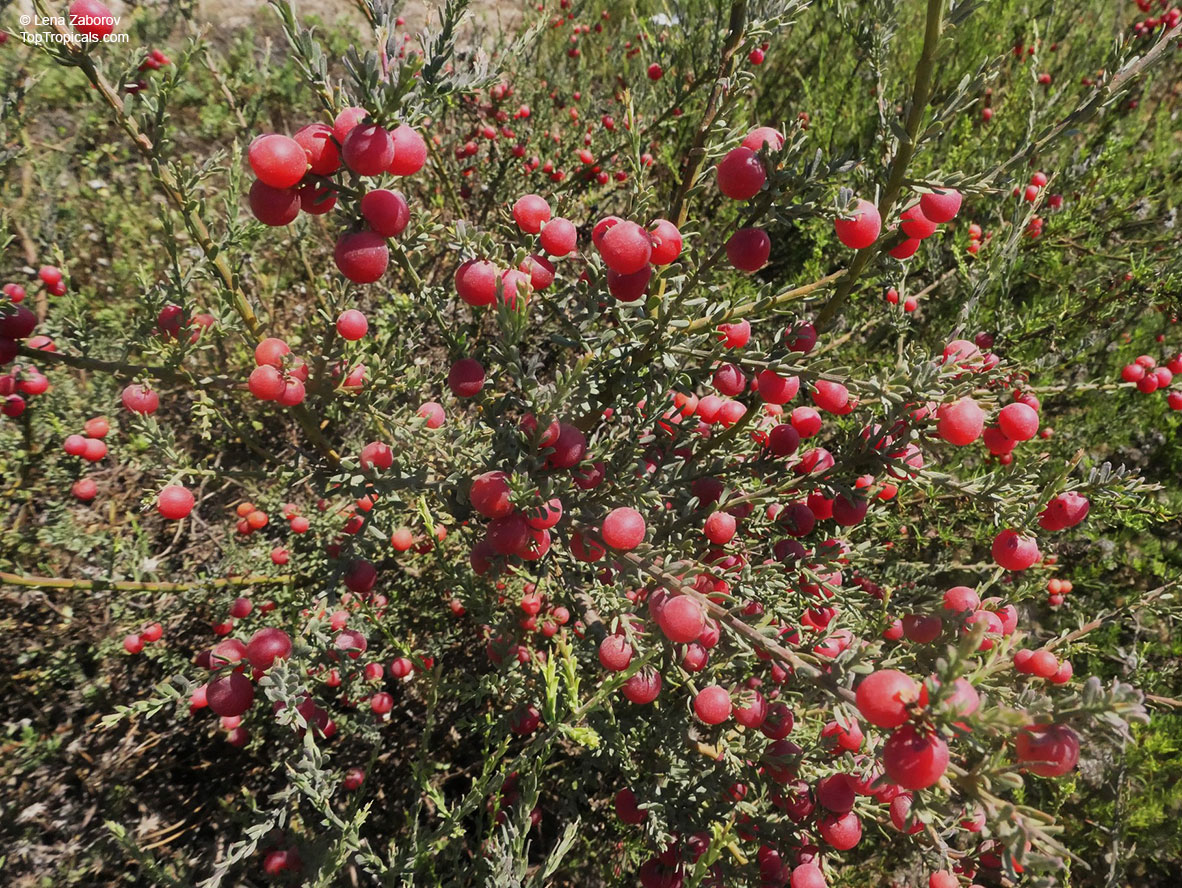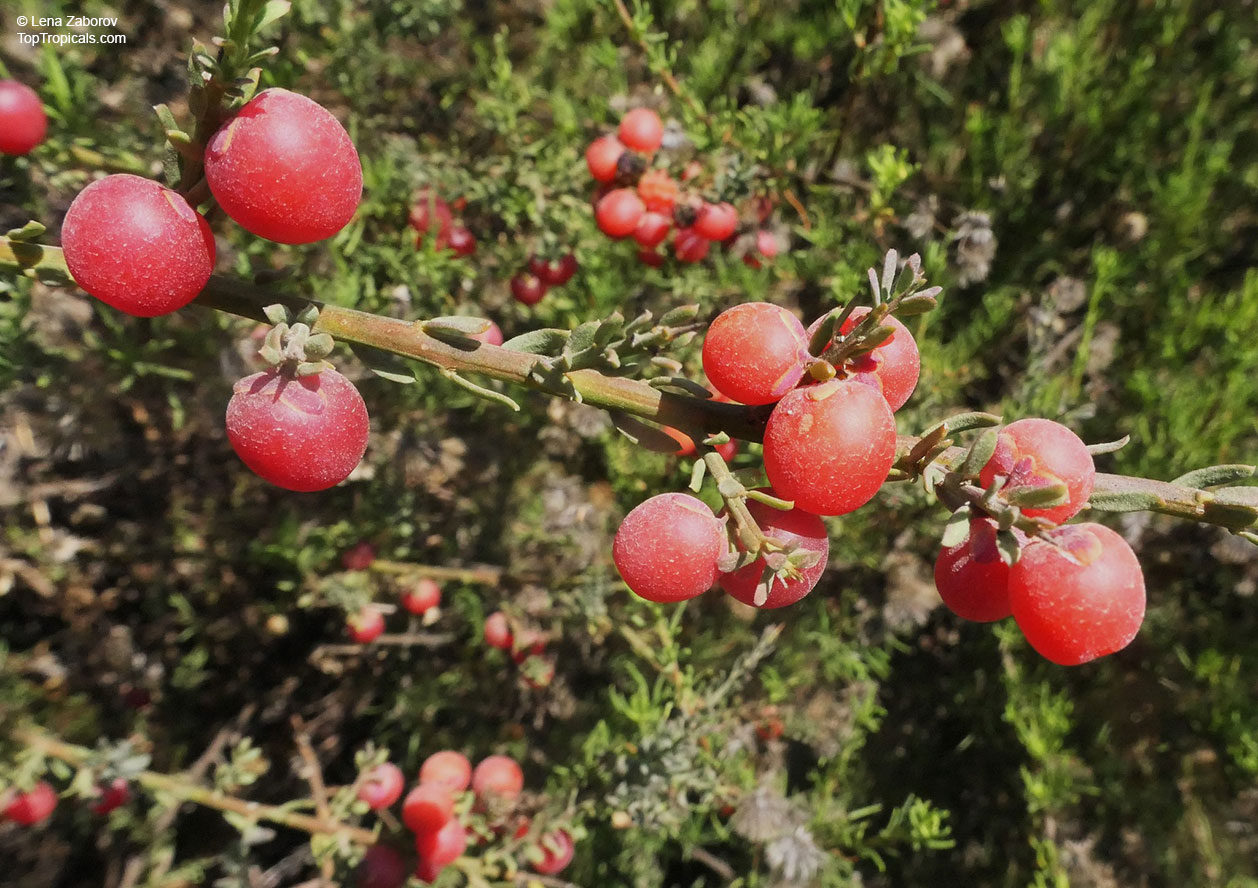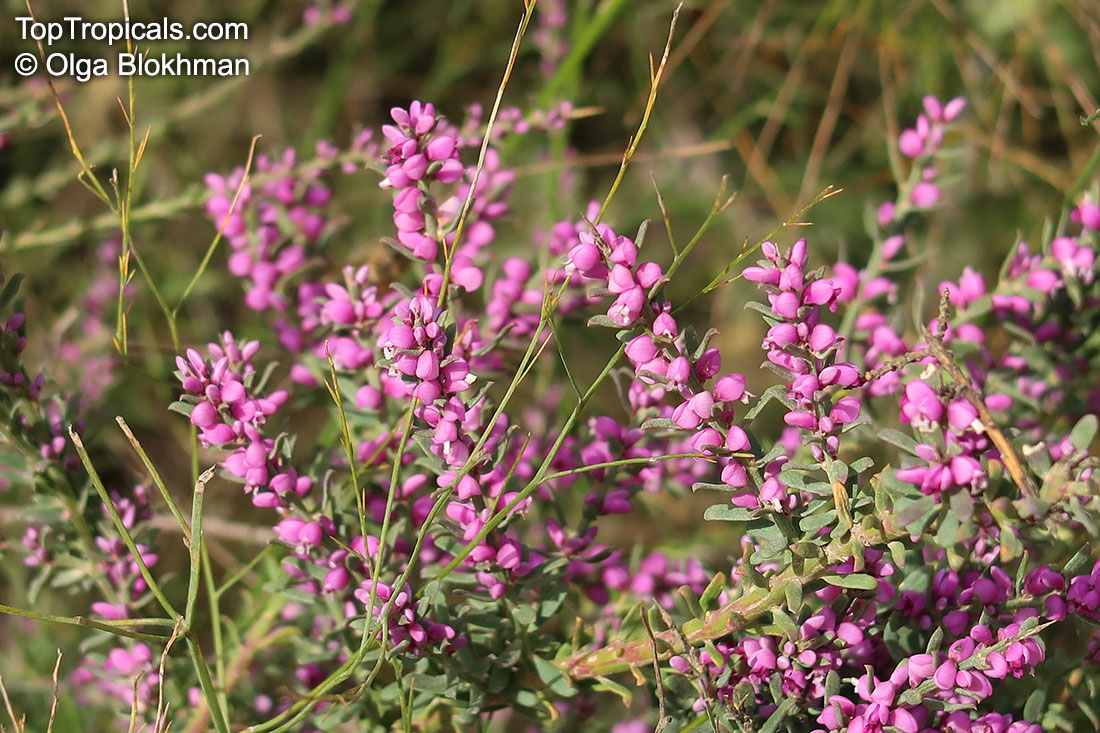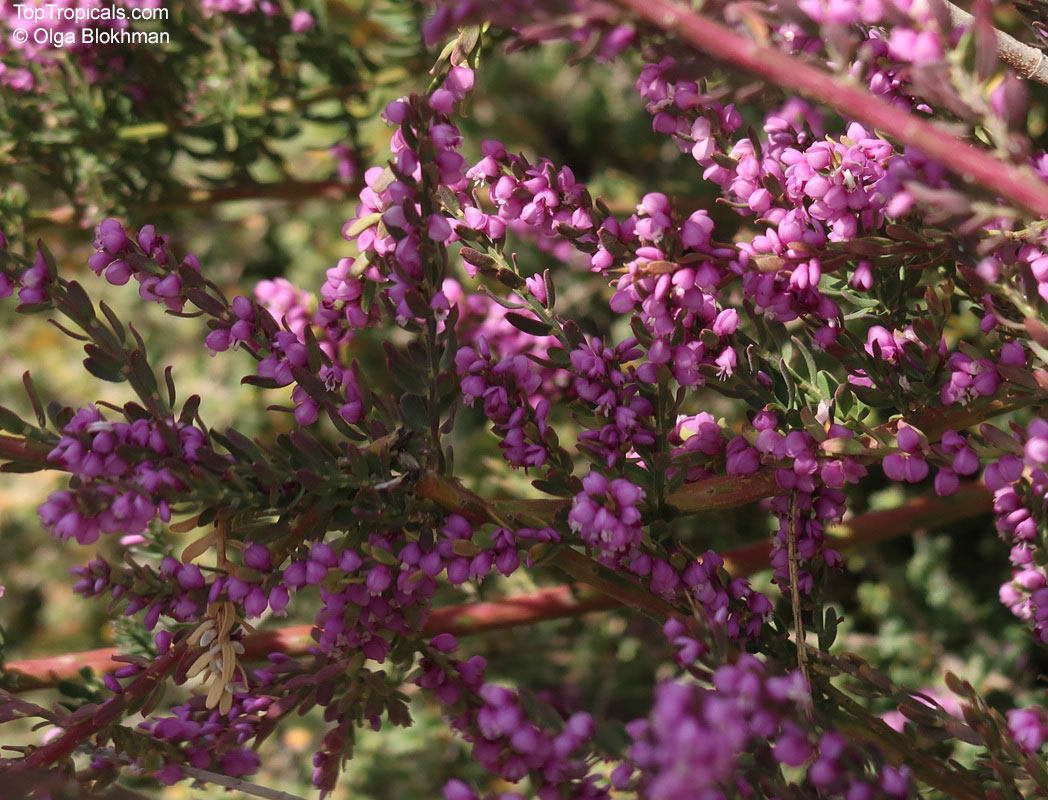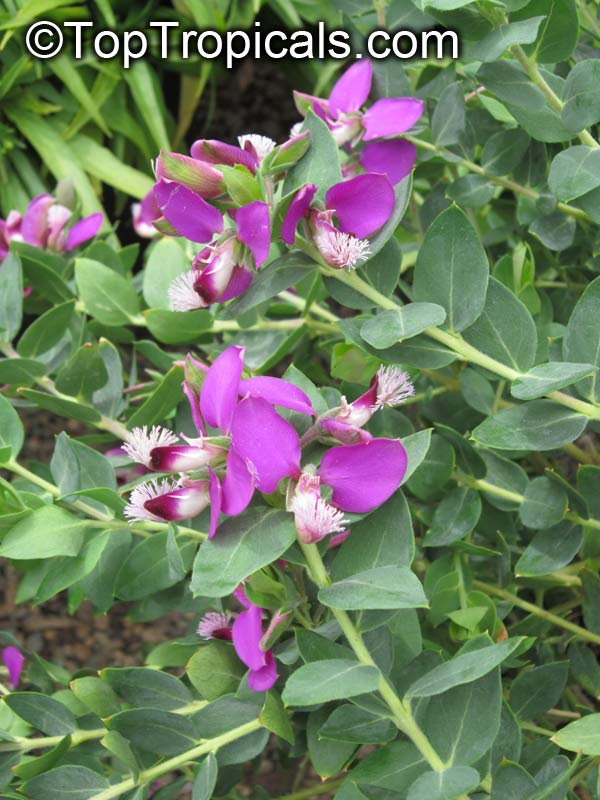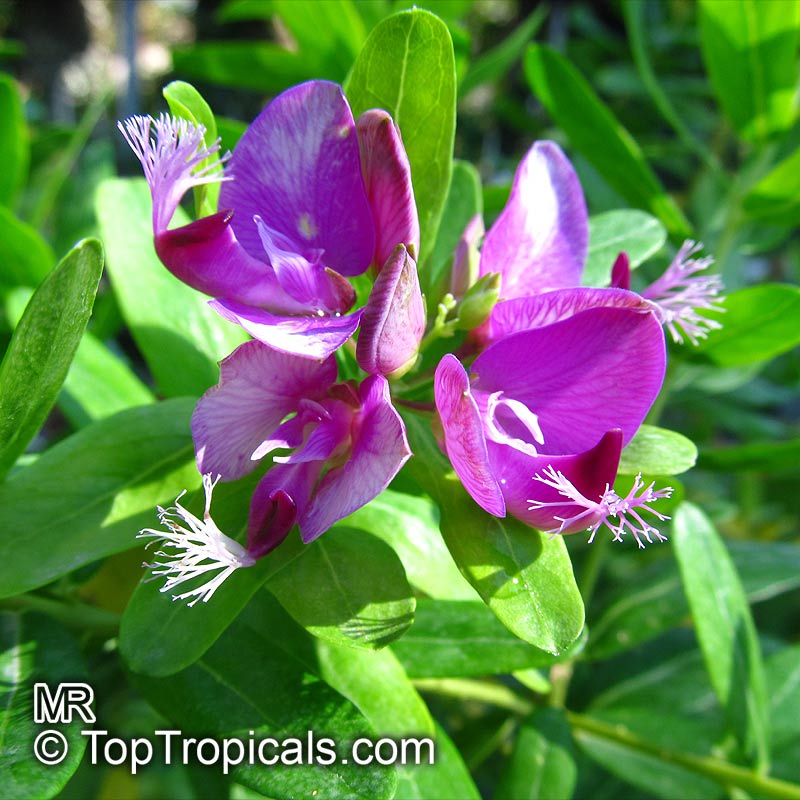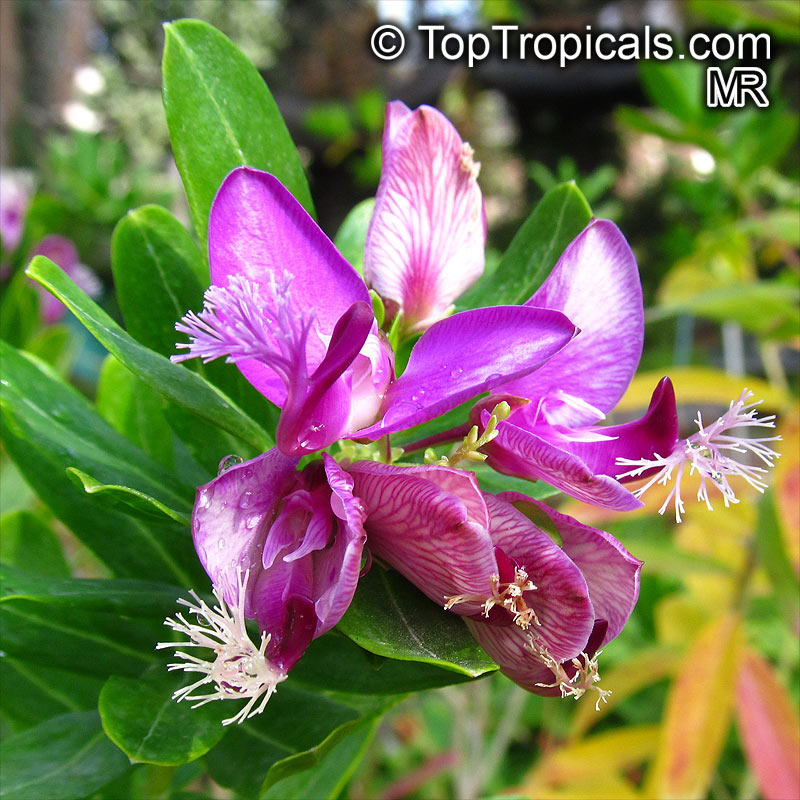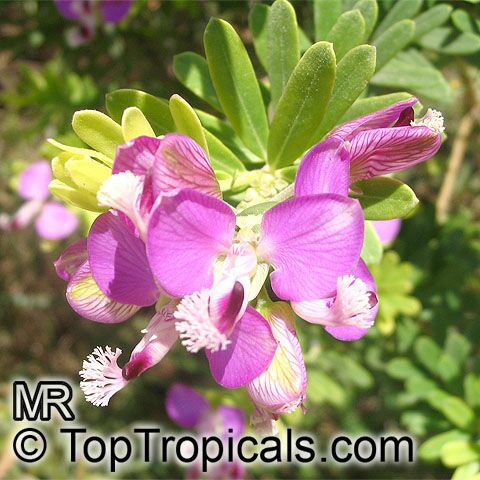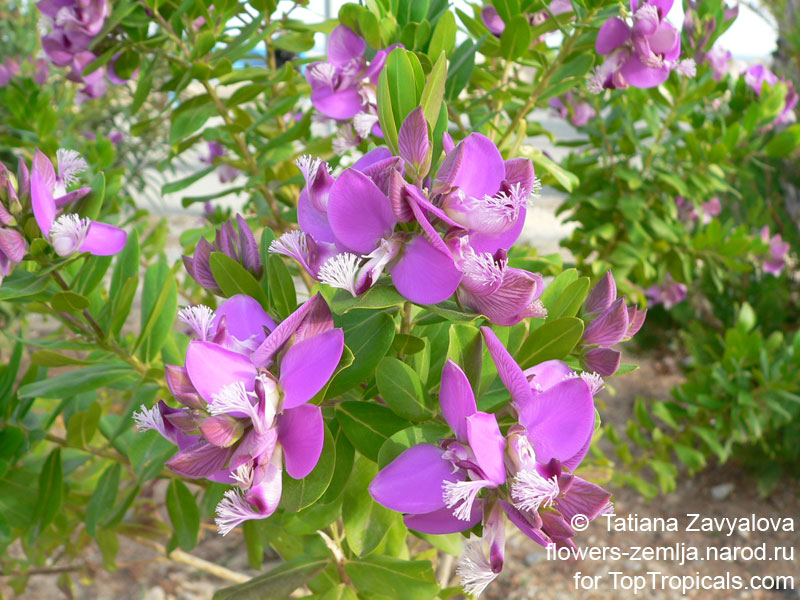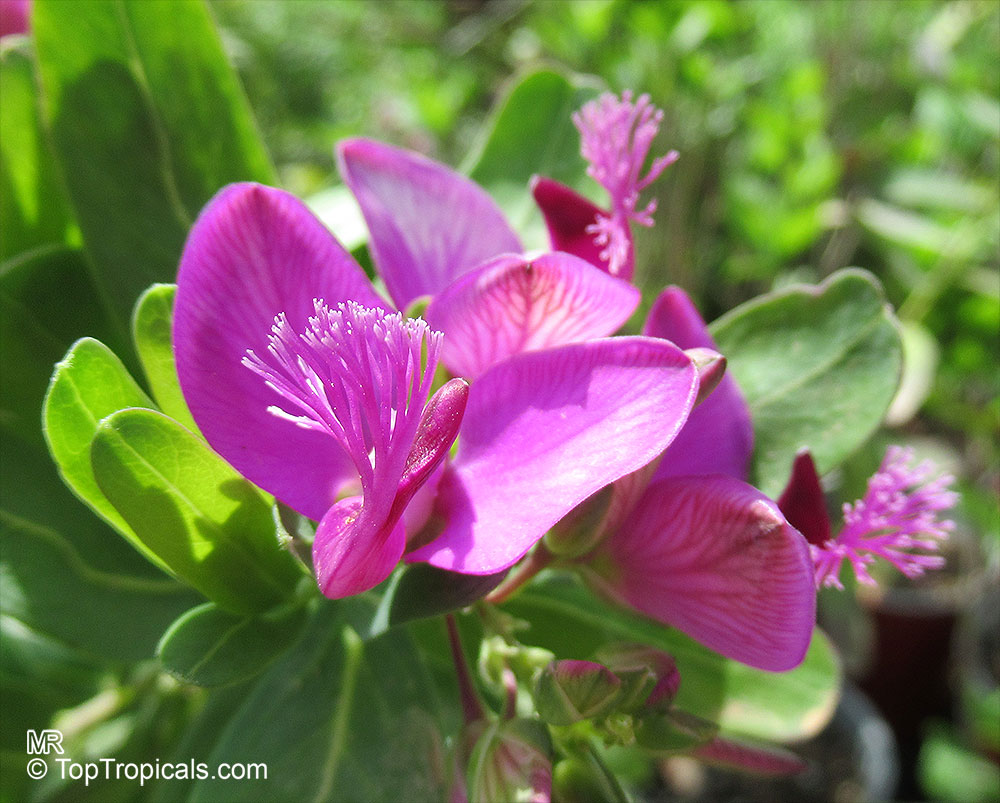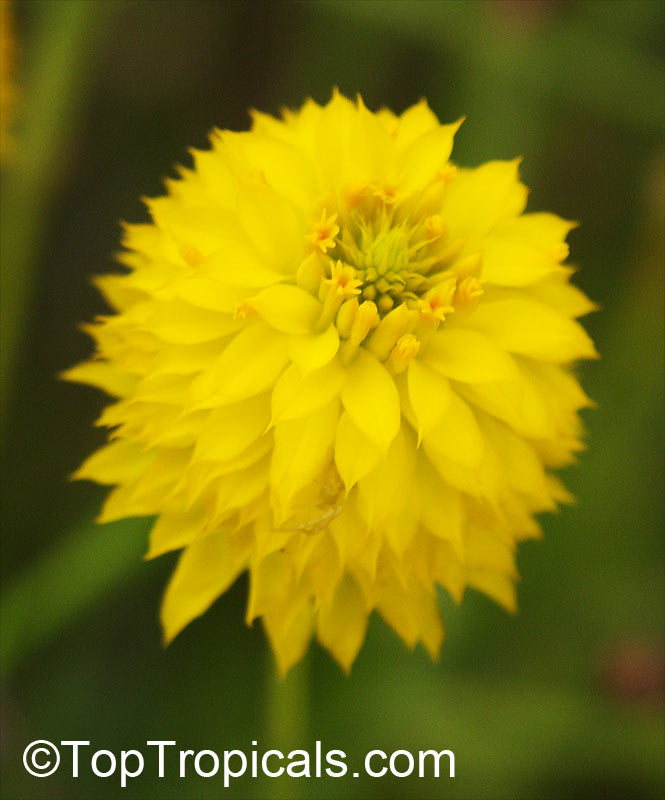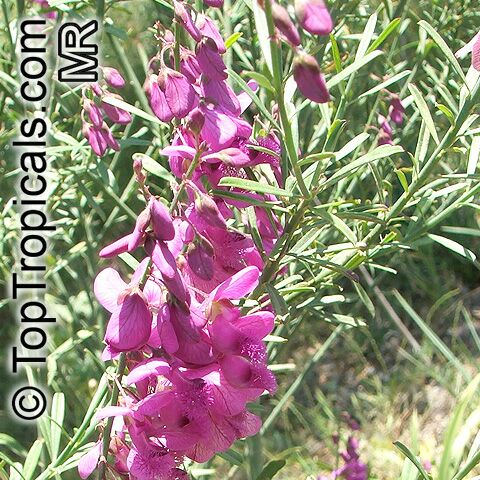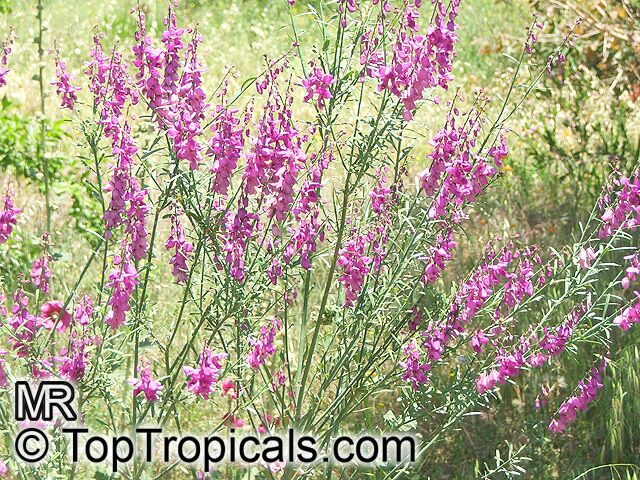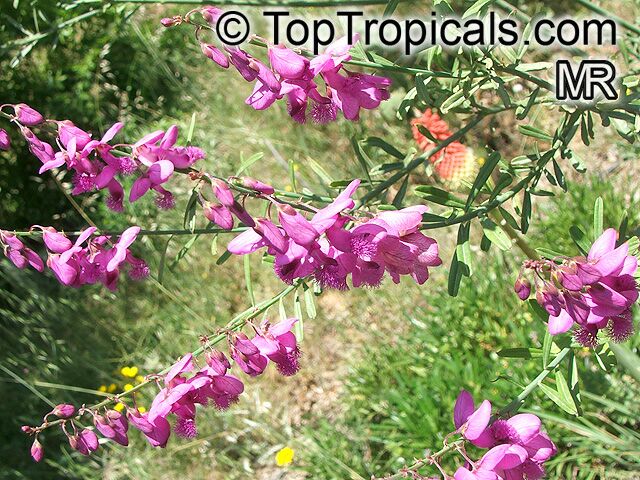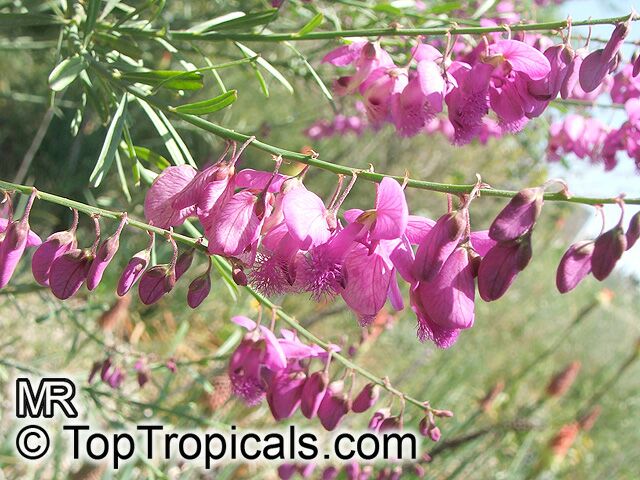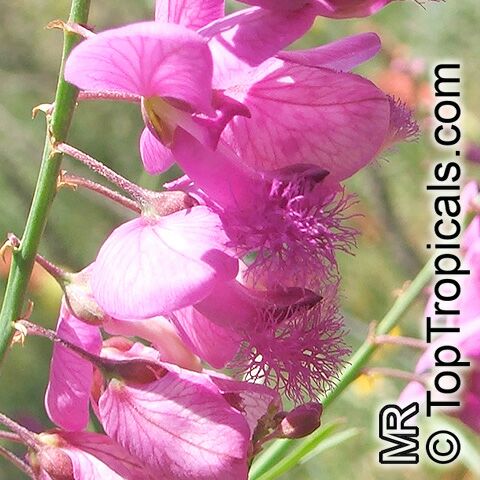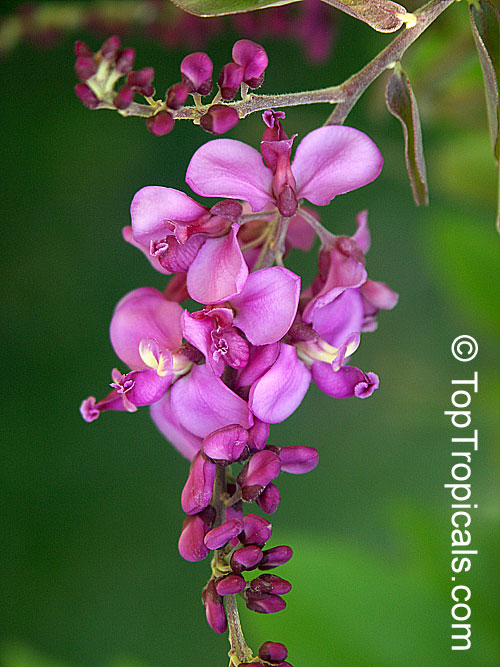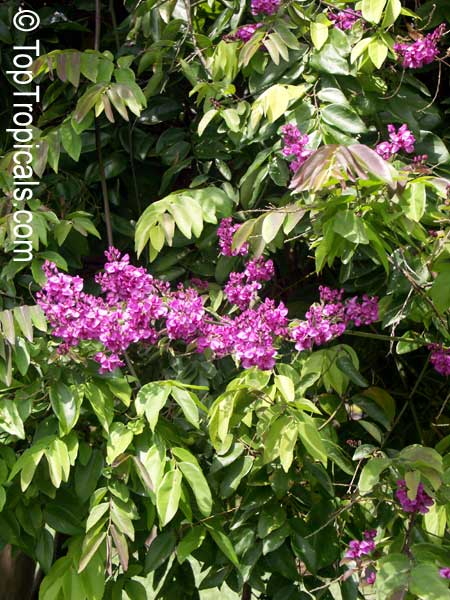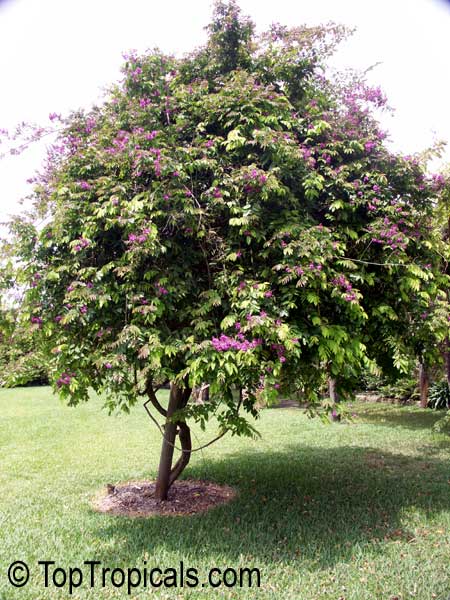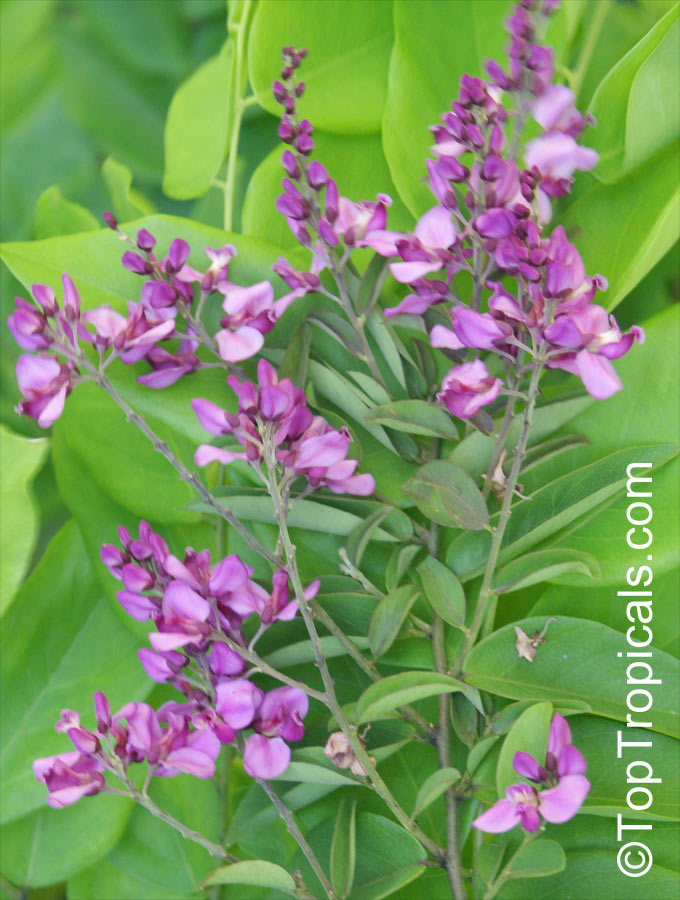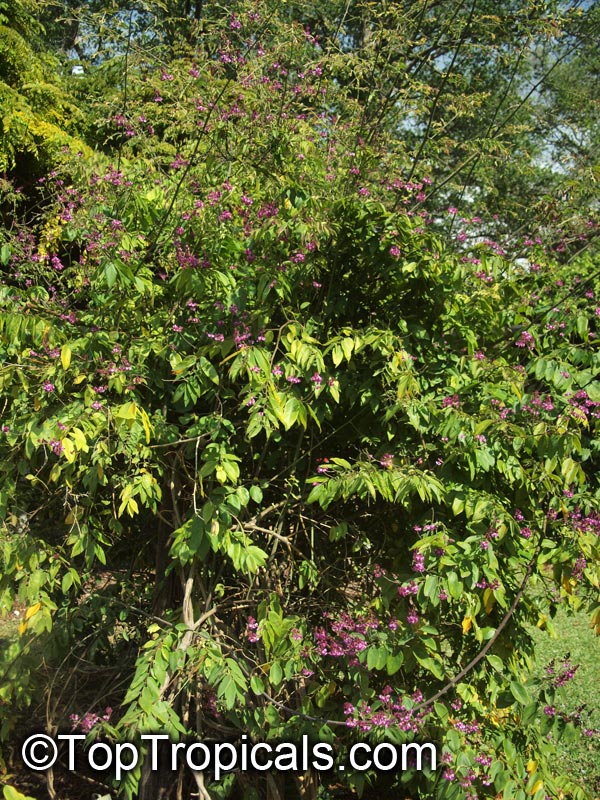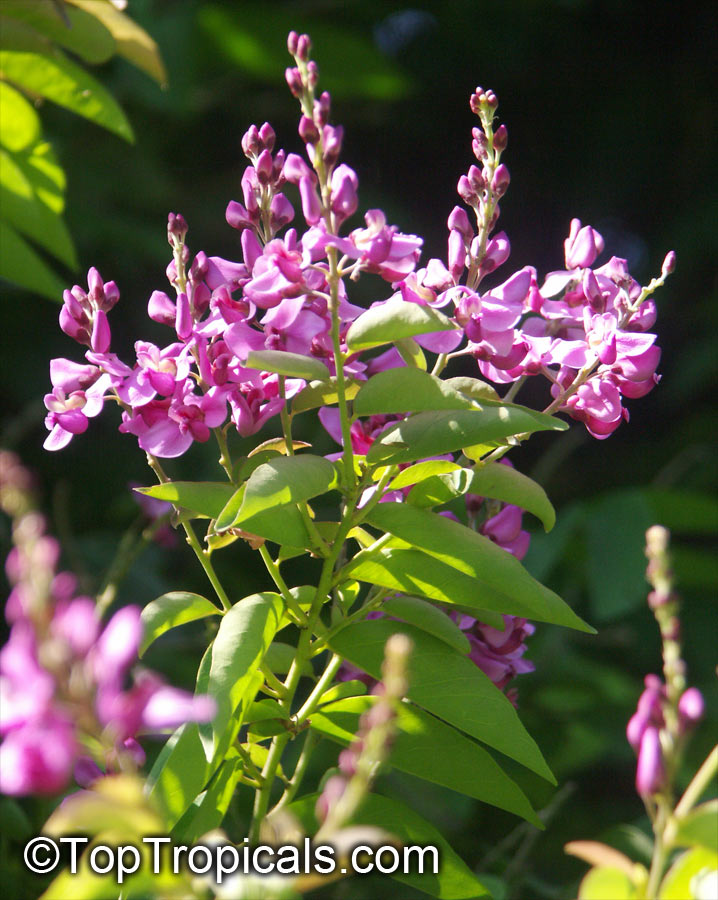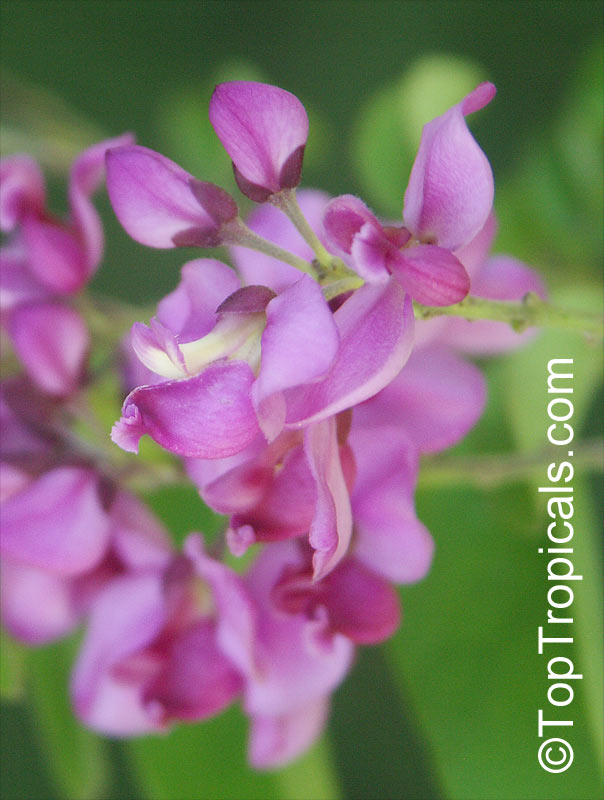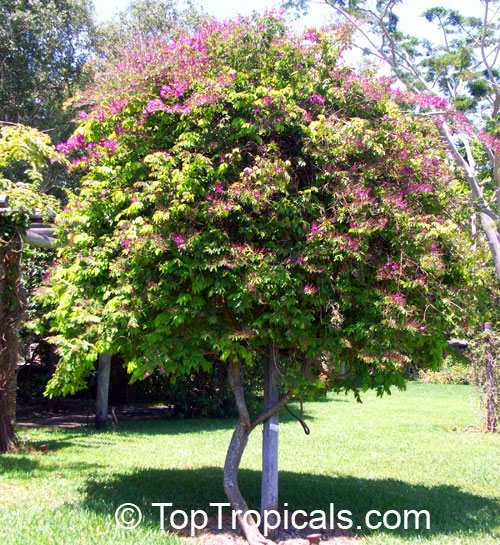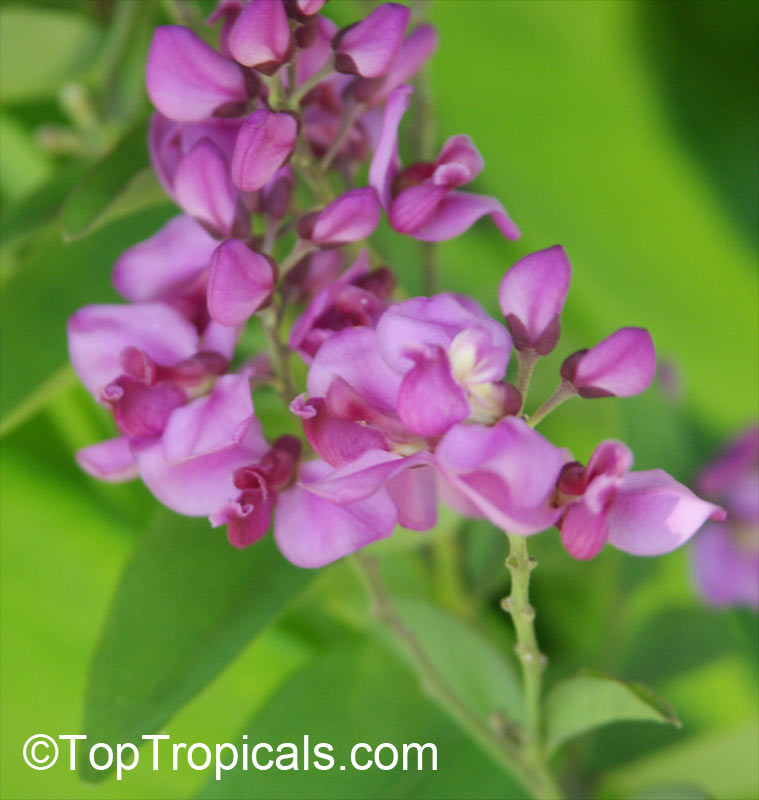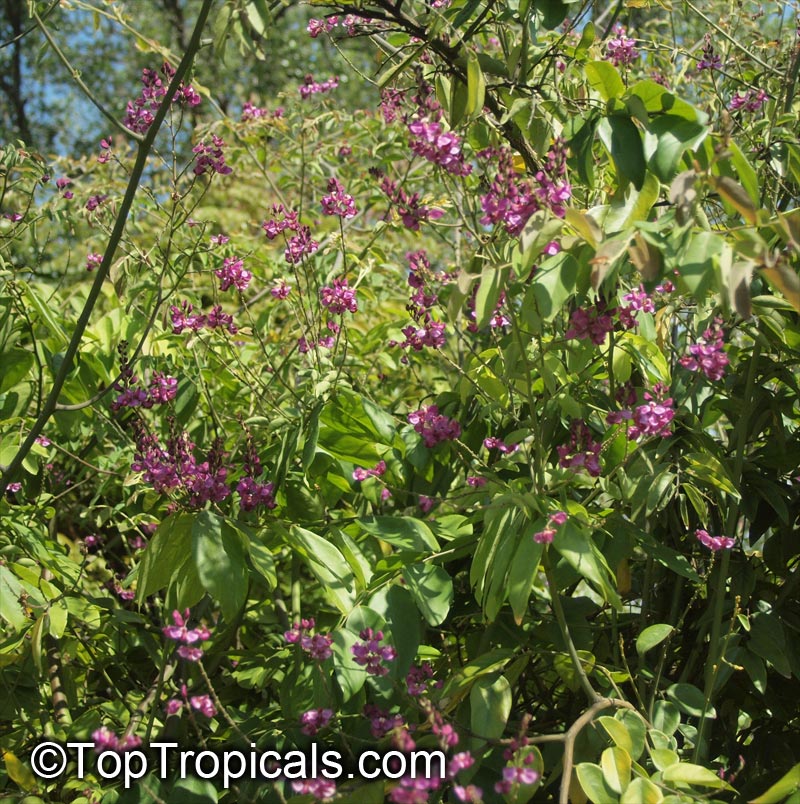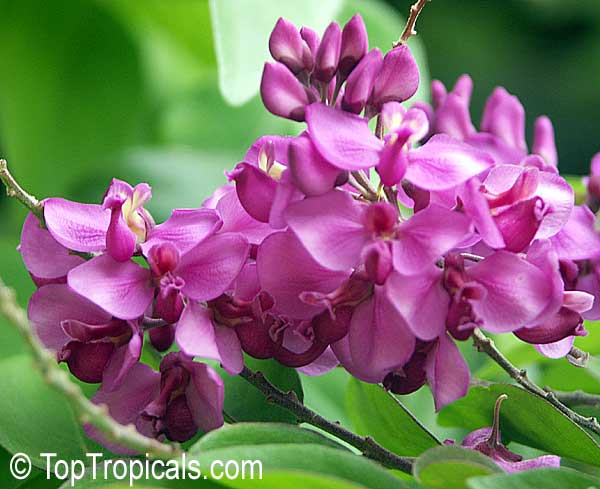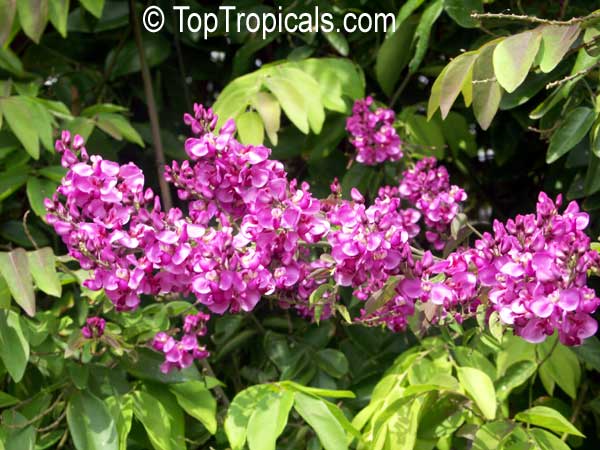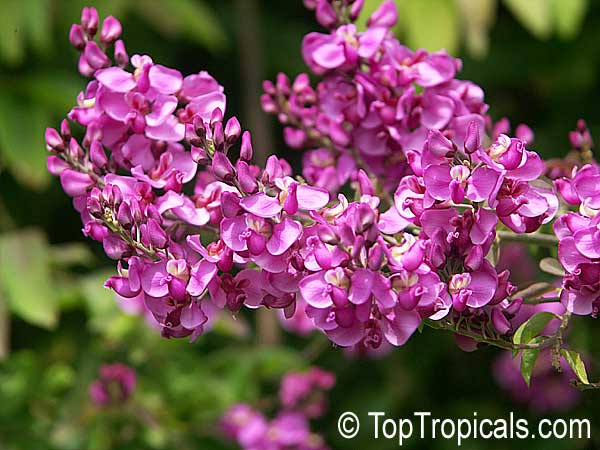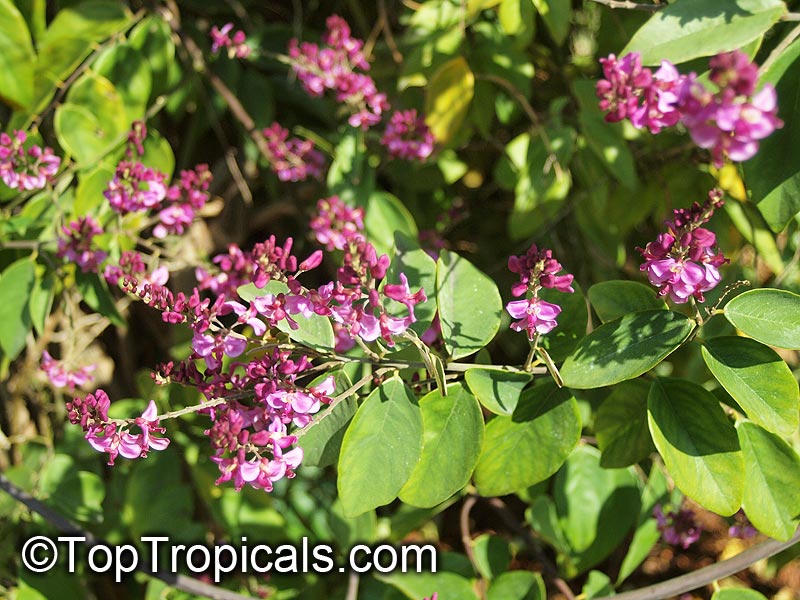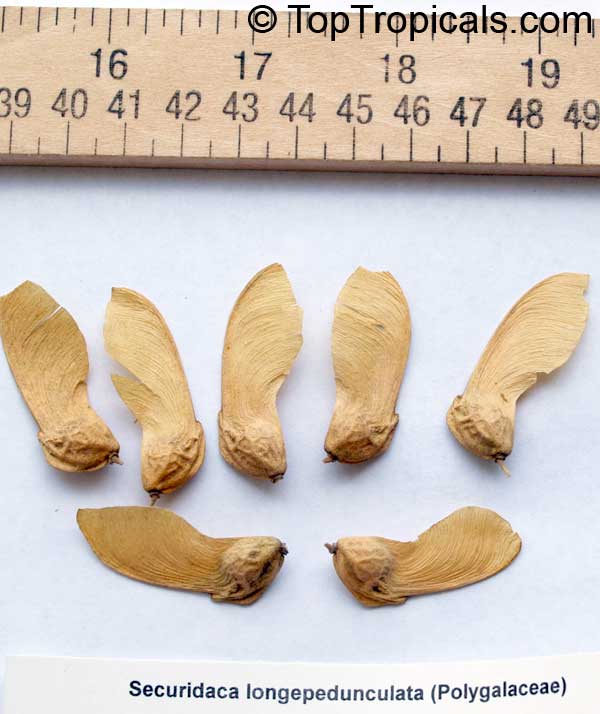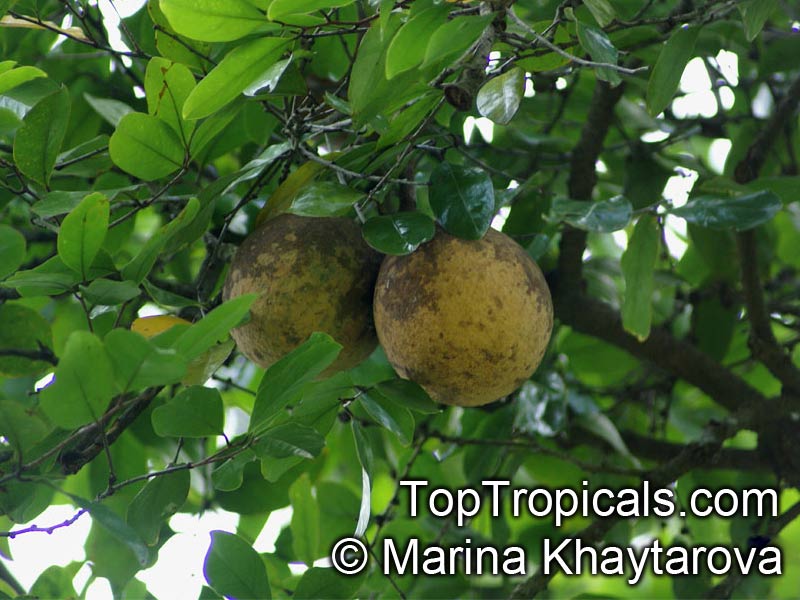Polygalaceae - Botanical Family
Top Tropicals Plant Encyclopedia
| Number of plants found: 8 |
Botanical name: Monnina sp.
Common name: Monnina
Family: Polygalaceae
Origin: South America, Central America






Botanical names: Muraltia spinosa, Nylandtia spinosa, Mundia spinosa
Common names: Tortoise Berry, Skilpadbessie
Family: Polygalaceae
Origin: South Africa











Muraltia spinosa, also known as Tortoise Berry, is an attractive and unusual shrub native to South Africa. Growing to an average height of 5-10 ft tall, it can also be used as a groundcover and low-growing shrub reaching heights of 2ft. Well suited to full sun, Muraltia spinosa can tolerate moderate water and dry conditions. It is adorned with pink flowers, which attract butterflies and hummingbirds, and produces a red edible fruit.
The Tortoise Berry fruit is rich in Vitamin C and has been used in traditional medicine for treating colds, flu and bronchitis, as well as providing relief for abdominal pain and tuberculosis. Tea/infusions of stems and leaves also act as a general tonic and bitter digestive. This ethnomedical plant has properties that can help those with sleeplessness when the leaves are chewed in small amounts. The fruits are quite thirst-quenching and can be eaten straight from the bush.
Tortoise Berry is very easy to care for and requires minimal maintenance. It is a tough plant and will usually survive with little attention. Water as necessary and ensure the soil is well-drained. It is also fairly resistant to most pests. It can be grown in USDA Zones 9-11. Mature plants are cold hardy and can withstand temperatures as low as 30 degrees Fahrenheit for a short time. It is salt-tolerant and can be grown near the sea. Propagation is best done from seed and can take up to a year, however it is very rewarding and will usually create a beautiful display once planted in rockeries and slopes and any well-drained, sunny garden position. If located in colder regions, it is advised to grow the shrub in a pot and bring indoors during cold snaps.
Botanical name: Polygala myrtifolia
Common names: September bush, Chupman Fields
Family: Polygalaceae
Origin: South Africa








Polygala is an old Greek name from the words polys meaning much and gala meaning milk, the name given to this genus for some of its members which have the reputation for promoting the secretion of milk. The species name myrtifolia means myrtle-like leaves. Polygala myrtifolia varies in form as it changes to adapt to the different areas it grows in, from the harshness of the coast to the drier inland climates. An evergreen shrub, the most common forms reach about 3 to 4 ft in height with a few upright-growing stems and slender branches densely covered with leaves that resemble myrtle. The oval-shaped leaves are usually 1" to 2" long and up to 0.5" wide. The leaves are light green, dark green or slightly grey. The flowers are carried in small clusters at the ends of short branches and look a bit like legume (pea or bean) flowers, but are actually quite different. Close inspection will reveal that although they have two wings and a keel, they lack the banner (also called standard) petal. All polygalas also have a showy, and very distinctive brush-like tuft on the keel. The showy petals, beautifully marked with darker veins, are usually in shades of mauve or purple, but can also be pink scarlet, or white. Polygala myrtifolia has blooms throughout the year with a peak in spring when the plants flower profusely. The fruit is a small, winged capsule. In the new garden it is excellent as a fast growing windbreak, hedge and colorful shrub able to grow in most soil types from full sun to semi-shade. Its growth is a bit more lax, producing fewer flowers in the shade, but it grows happily in the difficult pockets that change from full sun to semi-shade with the seasons. Polygala myrtifolia can easily be propagated from seed and tip cuttings preferably taken in spring and autumn.
Polygala × dalmaisiana is the result of crossing P. myrtifolia with P. fruticosa.
Botanical name: Polygala rugelii
Common name: Yellow Milkwort
Family: Polygalaceae
Origin: Florida




It is a perennial, small shrub growing 2-5 ft tall and forms clusters or mats of stems. It is found on dry scrub and open sandhills. It is also known as "Yellow Milkwort" , due to the yellow and orange flowers that bloom in the late winter and early spring. It is a low-maintenance plant and can be grown in full sun to partial shade and prefers well-drained soil. This species should be watered moderately and these plants need little care once established.
Polygala rugelii is well-suited for growing in USDA Zone 9-11. Gardeners in colder climates can grow this plant in pots and bring it indoors for the winter. When planting in a pot, use a soil mixture of sand, loam and organic material. Place the pot in a location that gets full sun and a moderate amount of water. During winter, reduce the amount of water the plant receives and keep the soil moist but not soggy. In colder temperatures, the plant needs to be kept in a location that is frost-free and protected from extreme cold to prevent damage to the foliage. If needed, you can use a mulch layer to insulate the roots and retain moisture.
Botanical name: Polygala virgata
Common names: Purple broom, Persboom, Bloukappie
Family: Polygalaceae
Origin: South Africa








This plant is native to South Africa, but grows well in warm climate regions and also in colder climates when grown in a pot.
Polygala virgata is a large-sized perennial shrub native to South Africa. Growing to 5-10 feet tall, this attractive plant has bright green foliage and abundant clusters of bright pink flowers from spring-fall. This stunning shrub is very attractive to butterflies and hummingbirds, and the flowers have a sweet fragrance. It forms wide, rounded crown with erect branches giving it a full and bushy look.
As with most flowering shrubs, Polygala virgata needs full sun to bloom and to keep its form. It prefers the moderate watering in well-drained soil, but must be watered during dry times to avoid dehydration. Pruning during the active growing seasons is recommended. The plant is said to be relatively tolerant to cold temperatures, and some reports indicate that mature Polygala virgata plants can survive temperatures in the low 30s°F for a short time.
This ethnomedical plant is often seen growing in USDA Zone 9-11 and can be grown in colder regions in a pot. When growing this enchanting shrub in a pot, choose a large pot, as it can grow over time larger than a pot can accommodate. Make sure to have a good quality potting soil and water appropriately, as the pots tend to dry out faster due to the exposed surface area. Furthermore, in colder regions, it is preferable that the pot will be placed sheltered from winter winds, as well as protected from frost.
Whether grown in a garden or in a pot, Polygala virgata is a mesmerizing shrub that will bring beauty to any garden. Its incredibly unique, deep purple-magenta flowers and its fragrant smell will surely attract hummingbirds and butterflies, while providing a stunning show.
Botanical names: Securidaca diversifolia, Elsota diversifolia
Common name: Easter Flower
Family: Polygalaceae
Origin: Central America, Caribbean






Securidaca diversifolia is native to Central America and the Caribbean and goes by the common name Easter Flower. Grown in USDA Zone 9-11, it is a fast-growing, twining vine or creeper with deep roots and a tough, woody stem and branches. Its pink flowers have earned it the nickname "pinkie" among gardeners, who are drawn to its delicate beauty.
The Easter Flower is a drought-resistant plant and, in warmer climates, only needs water when the soil is dry. In very warm regions, it should be grown in semi-shade, while in colder climates, full sun will be appreciated. This plant is excellent for partially shaded borders and trellises, and thanks to its woody stem, it is strong enough to climb up even the heaviest fences!
The Easter Flower also has ethnomedical properties, being used in traditional medicine to treat venereal diseases by extracting a white juice from the stem, crushing it into a ball, and then soaking the ball in water. The resultant mixture is then boiled and an internal cure is drunk.
For the colder climates where this vine is grown, it does best if planted in a pot. Be sure to provide a planter with good drainage, as too much water can lead to root rot, and place the pot in a spot with full sun. Water moderately but regularly, and supplement feeding with a low nitrogen fertilizer by simply sprinkling a bit around the pot's edges.
The Easter Flower is beloved by gardeners for its pretty pink flowers, versatility and ethnomedical properties. Being a fast growing plant with deep roots, it won't take long to be adorned with these flowers! Remember to provide your Easter flower with semi-shade in hot climates, full sun in colder ones, and regular but not excessive water to truly make it thrive.
Botanical name: Securidaca longepedunculata
Common name: Violet Tree
Family: Polygalaceae
Origin: South Africa







The Violet Tree is the most popular of all the traditional medicinal plants in South Africa.
The tree look very similar to Securidaca diversifolia.
Botanical names: Xanthophyllum obscurum, Banisterodes insigne, Banisterodes obscurum, Xanthophyllum insigne, Xanthophyllum scortechinii
Common name: Merbatu
Family: Polygalaceae
Origin: Southeast Asia







Use link to repeat this search:
https://toptropicals.com/cgi-bin/garden_catalog/cat.cgi?search_op=and&keyword_op=and&language=e&family=Polygalaceae
&number=10&no_change_lang=1&user=tt&sale=1&first=0

